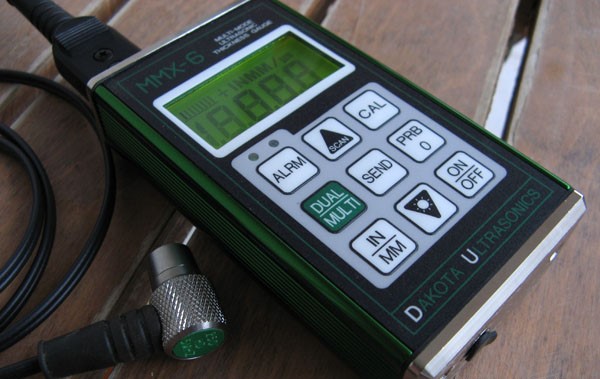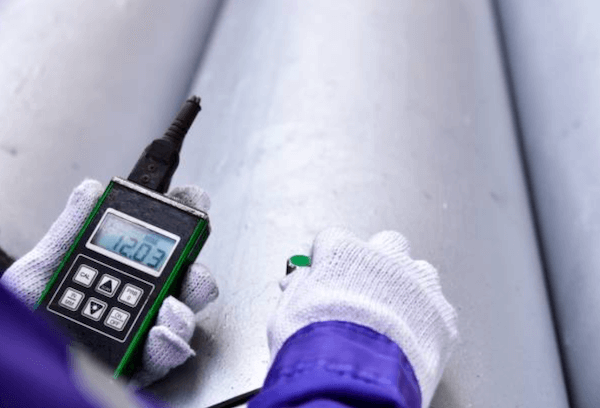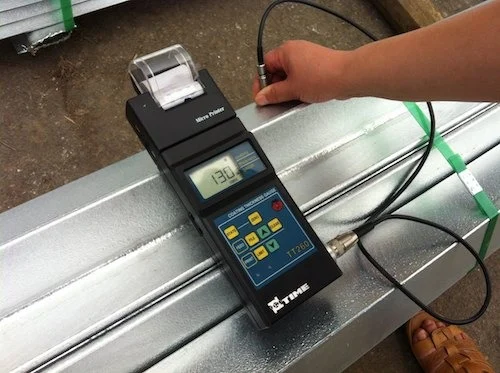
Ultrasonic thickness measurement (UTM) is a non-destructive testing method used to inspect the metal thickness of ship hulls, piping and structural steel.
Thickness measuring is essential across many industries to monitor corrosion, erosion and damage. Ultrasonic thickness measurement (UTM) is commonly used and the method can be applied to a wide range of structures and components that includes ship hulls, piping, pressure vessels and structural steel.
An ultrasonic thickness gauge works by precisely measuring how long it takes for a sound pulse that has been generated by a small probe called an ultrasonic transducer to travel through a test piece and reflect back from the inside surface or far wall. From this measurement, the thickness of the test piece is calculated and displayed on a digital screen.
Ultrasonic thickness measurement Service Center
UTM is frequently used to monitor metal thickness or weld quality in industrial settings such as mining. NDE Technicians equipped with portable UTM probes reach steel plating in sides, tanks, decks and the superstructure. They can read its thickness by simply touching the steel with the measurement head (transducer).
UTM technology combined with wireless data transfer is now being used by some companies to monitor live the thickness of metals in transfer chutes combined with wireless data transfer is now being used by some companies to monitor live the thickness of metals in transfer chutes

ultrasonic thickness gauge principle, it is possible to measure virtually any engineering material to a certain degree of accuracy, including metals, ceramics, glass, polymers, composites, and polymers.

When considering the Ultrasonic thickness gauge working principle and procedures, the probe and the main motor are the two most important components.
Frequently Asked Question
UTM is frequently used to monitor metal thickness or weld quality in industrial settings such as mining.
-
What is ultrasonic testing thickness?
Ultrasonic thickness measurement (UTM) is a non-destructive testing method used to inspect the metal thickness of ship hulls, piping and structural steel. Thickness measuring is essential across many industries to monitor corrosion, erosion and damage.
-
Why is thickness measured?
Thickness measurement is an important step in production monitoring, quality assurance and machine control. Although thickness measurements can be carried out using contact or non-contact sensors, non-contact measuring methods offer clear advantages in terms of accuracy and measuring speed.
-
What is the purpose of ultrasonic thickness gauge?
Ultrasonic thickness gauges are designed to improve safety and ensure reliability of materials subject to corrosion or erosion. The gauge is frequently used to monitor steel thickness in various areas of ships and offshore constructions. It is also used for monitoring pipelines.
-
What is the principle of UT?
Ultrasonic Testing (UT) uses high frequency sound energy to conduct examinations and make measurements. Ultrasonic inspection can be used for flaw detection/evaluation, dimensional measurements, material characterization, and more.




